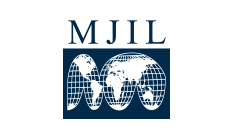Abstract
The intellectual property landscape is changing. As Jerry Reichman once observed, intellectual property rights were islands in a sea of the public domain until domestic laws expanded to include such “innovations” as business methods, software, scents, and sounds and turned the public domain into a pond surrounded by a continent of rights. Reichman spoke towards the end of the 20th century, and whatever problems accompanied this change, in truth (to paraphrase Voltaire’s view of the Holy Roman Empire), the concept of “intellectual property rights” was predominantly about neither “property” nor “rights” (nor was it always “intellectual”). Rather, copyright, patent, and trademark were principally thought of as incentives to promote innovation and creativity. Debates in the literature, in policy circles, and in courts were primarily quantitative, concerned with how much exclusivity was needed to produce adequate encouragement and how to balance the interest in protection against the access needs of the public, especially the next generation of innovators. Thus, while the subject matter of protection may have been expanding, there were many ways in which governments retained significant flexibilities to contour the “continent” to benefit the public. Not only was protection time-bound, domestic laws recognized various limitations and exceptions that permitted innovators to build on prior knowledge. Countries also had ample freedom to address problems presented by new technologies. And because monitoring compliance and enforcement were expensive, difficult, and slow, protection was easily eroded.
Recommended Citation
Rochelle Dreyfuss & Susy Frankel,
From Incentive to Commodity to Asset: How International Law is Reconceptualizing Intellectual Property,
36
Mich. J. Int'l L.
557
(2015).
Available at:
https://repository.law.umich.edu/mjil/vol36/iss4/1

